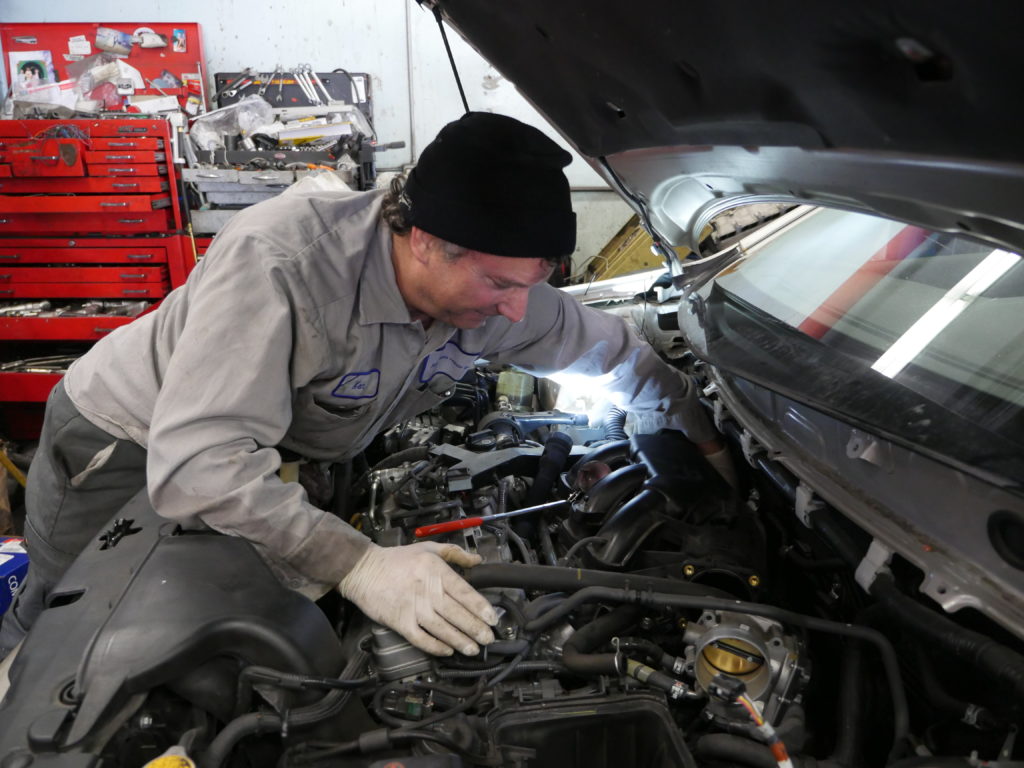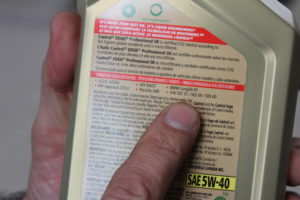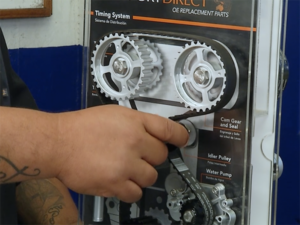Diamond Certified Experts: Under the Hood

When it comes to vehicle maintenance, one of the most important areas to address is under the hood. Photo: American Ratings Corporation (2017)
A vehicle has several components that need to be maintained, from tires to brakes to suspension. However, the most critical of these components are found under the hood—namely the engine and transmission. We’ve asked eight Diamond Certified Expert Contributors to give their tips on caring for these vital organs of vehicle operation.
Fluids
Fluids are the lifeblood of the engine, providing the necessary cooling and lubrication to allow its moving parts to function safely and smoothly. That’s why ongoing fluid maintenance is crucial for maximizing engine lifespan. Ken DeMartini of Japan Auto Repair, Inc. says this starts with engine oil. “One of the most important aspects of vehicle maintenance is having your oil changed at regular intervals—after all, a $75 service may save you $5,000 for a rebuilt engine. You should also make a habit of checking your oil in between services. Just pull out the dipstick and inspect the oil level; if it’s low, add some oil.”
However, before adding oil, you need to make sure you’re using the right type for your engine. According to Ryan Cordes of European Sales & Service, the emergence of synthetic oils has made this more complicated than it used to be. “High-end makes like Mercedes-Benz use synthetic oils that are very different than the oils used in most other vehicles,” he explains. “Additionally, some Mercedes-Benz models have diesel engines that require a very specific type of synthetic oil, so it’s important to verify what’s correct for your vehicle.”

Before adding oil to your engine, check to make sure it meets manufacturer standards. Photo: American Ratings Corporation (2017)
Mr. Cordes says high-end car owners also need to be aware of oil change intervals. “Since Mercedes-Benzes use synthetic oil, their oil change intervals are much longer than the average car—usually between 10,000 and 13,000 miles. However, it’s not a good idea to drive your car that long without having it seen by a mechanic. As a general rule, it’s best to bring your car in at least once a year for a full inspection. This will allow your auto technician to refresh your oil reservoir and make sure your tires, brakes, and other vehicle components are in good operating condition.”
After engine oil, the next critical fluid you should check regularly is transmission fluid. Agustin Cruz of Cruz Auto Repair explains how: “To check your transmission fluid, locate the dipstick—typically red-colored—and repeat the same process as you would for checking your oil, making sure the fluid level is within the acceptable range. The fluid should appear bright red and have a somewhat sweet scent. If it appears dirty or smells burnt, schedule a n appointment with your mechanic to have it changed.”
Jason Clark of Toyota Marin says a third engine fluid to keep an eye on is coolant (also known as antifreeze). “Coolant helps maintain the temperature of the water in the radiator and engine. It’s housed in a reservoir adjacent to the engine which, in addition to being semi-transparent, has a fill marker to denote the desired level. When adding coolant, it’s important to do so at the reservoir fill point and not the radiator cap, which is under extreme pressure and should never be removed when the engine is hot.”
Air Filter
While fluids lubricate and cool a car engine’s moving parts, an air filter helps keep the engine clean by stopping abrasive debris and contaminants from entering the cylinders. According to Wayne Pentecost of Wayne & Son’s Automotive Repair, the condition of an air filter can also affect engine fuel economy. “When an air filter isn’t regularly replaced, the excessive dirt buildup can cause it to become clogged, which restricts engine ventilation,” he says. “When an engine isn’t able to ‘breathe’ properly, it’s more likely to run rich—in other words, to use more gasoline than it’s supposed to.”
To prevent such issues, air filters should be inspected regularly and replaced as needed. Bill Faulconer of Renson Automotive, Inc. provides some guidelines: “In most cases, replacing an air filter is simply a matter of popping off the adhesive clips, pulling out the old filter and putting a new one in its place. Before replacing the filter, determine whether replacement is necessary—even if the filter doesn’t look completely clean, it may still be functional for a while longer.”
Timing Belt
The timing belt is one of an engine’s most critical components. It’s responsible for the rotation of the camshafts, which synchronizes the sequence of valves opening and closing with the up-and-down movement of the pistons. Despite this important role, the timing belt is more susceptible to breakage than most other engine components, which can lead to a disastrous situation. “Unlike an engine’s metallic components, a timing belt is made of rubber, which makes it prone to deterioration over time,” explains Gabriel Manzo of Gabe’s Auto Care Center. “If the belt isn’t preventatively replaced, it’ll eventually break and cause serious engine damage. That’s why it’s important to have your timing belt changed at the manufacturer-recommended interval—usually the 90,000-mile mark.”

In terms of preventative maintenance, few measures are as crucial as timing belt replacement. Photo: Gabe’s Auto Care Center (2017)
In addition, Mr. Manzo says there are a few other parts that need to be replaced in conjunction with the timing belt. “Besides the belt itself, there are several components that make up an engine’s ‘timing system,’ including an idler pulley that spins, a water pump that rides with the belt and cam seals behind the gears. All of these components should be replaced along with your timing belt.”
Transmission
A vehicle’s transmission allows the driver to shift in and out of different gears, either manually or automatically, depending on the style of transmission. In order for the transmission to smoothly transition from one gear to another, it requires lubrication via transmission fluid. While manufacturers previously advised vehicle owners to have their transmission fluid changed every 15,000 miles, many today claim the fluid will last the lifetime of the transmission. However, Mr. DeMartini presents a caveat: “While the fluid may last the lifetime of the transmission, that lifetime won’t be very long if you don’t change it. Like any other engine fluid, transmission fluid breaks down over time, so it’s a good idea to have it changed every 30,000 miles.”
While routine fluid changes will extend your transmission’s lifespan, Chester Kniss of Delta Transmission makes an important distinction. “A lot of ‘quick lube’ places offer a ‘transmission flush,’ but this is no substitute for a proper transmission service,” he warns. “The problem with transmission flushes is they only address the fluid itself and ignore components like the filter and gasket. The fluid gets replaced but any debris buildup inside the transmission case gets left behind, most of which ends up trapped in the filter. Over time, as the filter gets plugged up with debris, it can result in a worse condition than existed previously. That’s why it’s important to have your transmission serviced by a professional who will remove and replace the pan gasket and filter as well as the fluid.”